originally posted at https://canmom.tumblr.com/post/634536...
嘿朋友动画的晚上正在上映电影!
hey friends, Animation Night is now screening films! (thanks @experimentalmeowsiclesbian for help with the Chinese)
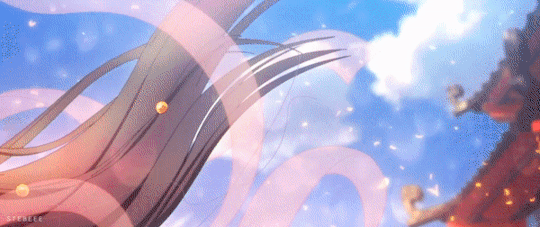
So. Last week we possibly crossed the line into TOO heavy, and this week we’re going to take things in a much more chill direction for a bit of a palate cleanser. And learn a thing or two in the process, maybe!
In the last few years, the Chinese animation industry has really been picking up steam. We’ve seen a little of Chinese animation before: the Xiao Xiao series by Zhu Zhiqiang was a hit on Web Animation Night, and I always go wild when I get to see a cut by Weilin Zhang, but tonight the focus is on Chinese animated films from the last, very chaotic century.
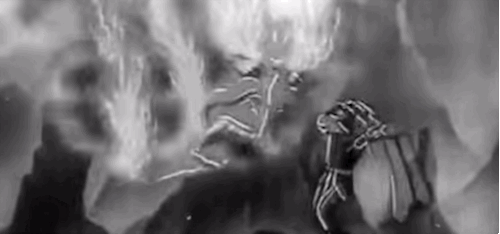
Trying to do a history of even just 20th-century China would be a bit absurd even for my increasingly self-indulgent animation night intro posts, so I’m just going to plug the excellent writing of the Chŭang collective (1, 2) and move on. But you probably know the broad strokes: civil war, invasion, revolution, famine, factional struggle, extremely rapid late development of capitalism, industrialisation, urbanisation, integration into the global manufacturing chain… There was, shockingly, a whole lot going on in a country that presently contains more than 1 in 6 people on Earth. Amidst all the world-shattering historical events, a few people found a chance to try and build an animation industry.
Chinese animation kicks off about when animation was getting going around the world, i.e. in the 20s. Our earliest examples are the four Wan brothers: Wan Laiming, Wan Guchan (his twin), and the slightly younger Wan Chaochen and Wan Dihuan, all from Nanjing.
These guys, specifically the older two, were working for the Great Wall Film Company in Shanghai, and inspired by Fleischer shorts - plus their own desire for a specifically Chinese style - to make films such as Uproar in the Studio (1926), which is unfortunately now lost. There’s apparently some evidence that Japan bombed one of their studios in the 1932 January 28 Incident, but this did not stop the brothers, and they went on to add sound to animation with The Camel’s Dance (1935)… also now lost.
Despite enduring the horrifying conditions of the Japanese invasion (Shanghai saw three months of heavy fighting followed by years of occupation), the Wan brothers saw Disney’s Snow White, and were determined to make a feature film of their own - which became Princess Iron Fan, released in 1941 in occupied Shanghai. The brothers, now working with “only surviving film studio” Xinhua Film Company, led a team of 237 artists to make a 20,000-frame, fully voiced film. It tells an episode from Journey to the West, setting a tone of historical and mythological themes that’s still going pretty strong. And it had a profound impact over in Japan, inspiring both a young Osamu Tezuka to go into manga, and inspiring Japan’s own first feature-length animated film… which was, as you could expect from the times, military propaganda.
After the end of WWII, and the victory of the Chinese Communist Party in the civil war, the Wan Brothers ended up moving to the new, government-funded Shanghai Animation Film Studio, with a mandate to make entertaining, educational films for children. They took this as a chance to start experimenting more and more with the possibilities of animation. From here, I won’t be able to cover this half as well as Accented Cinema on Youtube, so let’s drop his video…
…and I’ll add a little extra links and commentary as I give my take.
Shanghai Animation brought in new artists alongside the Wans, such as illustrator Te Wei. As mentioned, films like The Proud General (骄傲的将军 Jiāo'ào de Jiāngjūn) (1956) drew on the exaggerated motions of Beijing opera, and the flowing, curvy drawing style of Tang Dynasty paintings, which results in a really unique style.
Chinese animation really flourished during the brief Hundred Flowers Campaign - nowadays mostly remembered in the West as a means for Mao to flush out his political opponents, but it did involve actual serious arts funding, and this seems to have lasted even after Mao dramatically reversed the campaign. Pigsy Eats Watermelon (猪八戒吃西瓜) (1958) was not the first to use paper cutout animation, since paper cutouts date back to the earliest animated films; I think what is meant is that Pigsy pioneered a specific technique of cutout animation, but there doesn’t seem to be much good info available in English. There was also the charming film The Clever Duckling (聪明的鸭子) (1963), directed Yu Zheguang, which used stop-motion animation of little folded paper models (described as origami animation, not sure what the Chinese term is).
But the most beautiful film from this period - in a style that’s basically never been seen outside of Te Wei’s films - would probably be the short film The Cowherd’s Flute (牧笛 Mu Di) (1963), which managed the astonishing feat of animating with ink wash paintings (山水 shan shui), specifically inspired by the paintings of Qi Baishi.
I honestly can’t imagine trying to do animation cleanup when working in a medium like ink wash, it’s hard enough with digital lines, and yet this film is full of fully animated, translucent and often lineless characters making complex, slow (i.e. more drawings!) 3D motions in and out of water. (Maybe rotoscoping was involved? or maybe they were just that good!) This kind of ink wash animation pretty much became Te Wei’s signature.

It wasn’t just Te Wei of course! At the tail end of the ‘Golden Age’ of animation, Uproar in Heaven (1964) saw the Wan brothers (all four of them this time!) pulling out all the stops for cel animation, with all kinds of creative composition, beautiful background painting and impressive handling of secondary action like flowing cloth. This film was… guess what, another Journey to the West adaptation, because the Wan brothers really adored that book. The Monkey King shows up in heaven by invitation (ascending to heaven seems from my pretty cursory understanding to be a very widespread mythological theme), and - as he is wont to do - mucks up the whole established order there.
This period could not last, and the end came in a pretty abrupt way. Though the Chinese animation industry seems to have passed through the Great Leap Forward without obvious impact, the same was not true of the Cultural Revolution. While the reasons and intentions of the Cultural Revolution are controversial to say the least and it’s way too complicated to get into here, the movement led to many people getting drawn into Red Guards and groomed into various kinds of cultish zeal, and among the consequences, Red Guards more or less shut down Shanghai Animations and banned most of their prior works from distribution.
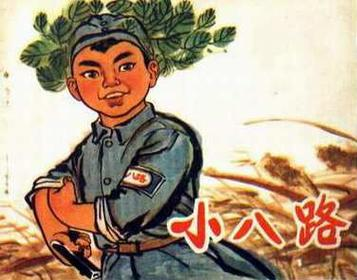
(I can’t find a higher-res copy of this, but this is the cover of a companion book to Little 8th Route Army, a Cultural Revolution-era animated film about a child soldier in the Sino-Japanese War.)
As for the animators themselves, many were “sent to the countryside” (to perform supposedly re-educational manual labour), or incarcerated under the laogai and laojiao forced labour systems. Te Wei, for example, suffered a year’s solitary confinement, and was then banished to the countryside for a number of years.
From the present, this extreme censorship seems difficult to understand. It’s tempting to use the word ‘cartoonish’, which is ironic given the subject matter. What is ‘ignorant of class struggle’ about a boy riding a buffalo around? But I suppose it would make more sense to look at how the dynamics would have played out on the scale of individual people in an atmosphere of extreme paranoia. If you could look like you were helping The Cause by banning a cartoon about a buffalo, then maybe they’d get off your neck… nobody wants to be the guy standing up and saying ‘uh, are you sure this is worth the effort to censor?’ because they might then be the next one undergoing spectacular public humiliation or worse. So it’s probably not like someone was actually sitting there saying, yes, I truly, rationally believe that The Cowherd’s Flute turns people into fascists… not that the results were much different.
(After School, without subs I’m afraid - but I doubt you want to watch too much of it anyway…)
There was barely any notable animation in this period, and instead, what there was tends to be… nationalism soup, with titles that get translated like Support the Vietnamese to Fight Against America, Expose the Peace Negotiation Conspiracy of America, and so forth.
Even the ones whose argument wasn’t directly written into the title, such as After School (1972), have about the subtlety of a Chick tract: virtue is equated with overt demonstrations of zeal like reading revolutionary books, play and idleness is condemned, and children are directly encouraged to report anyone who casts doubt on this program to the government after ganging up and shouting at them. The innocent Child in danger of corruption is shown all exaggeratedly healthy and uniformly righteous, while the counterrevolutionary sweets-seller who threatens to corrupt them painted as hunched, wrinkled and cringing. It’s the classic nationalist/fascist playbook. For kids.
This also led to a stylistic change, as you can see above. This is probably not a great example (the animation is stiff and floaty), but there were a few beautiful films from the previous period that made it through the censor…
…such as Heroic Little Sisters of the Grassland (1964), which tells the true story of two Mongolian girls who almost died protecting sheep in a snowstorm. Since this film centres on a communal farm and explicitly praises Mao, it apparently made the cut. No doubt the modern setting and pro-nationalistic-sacrifice message was also a plus. Artistically, the film’s background paintings of the steppe, and the animations of terrified sheep in the snow, hold up pretty well.
Well, Mao popped his clogs, and the Cultural Revolution fizzled out, and the faction of new leader Deng Xiaoping got his chance to switch tracks from Mao’s not-exactly-anything developmental regime to what his new slogan called ‘Communism With Chinese Characteristics’, which is to say, capitalism with a more overtly authoritarian state and less guarantees of food and such. But at least as far as animators are concerned, this was a chance to get back to it and start making films again.
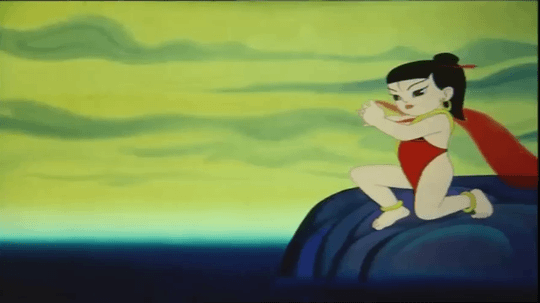
Among the new wave of films is Nezha Conquers the Dragon King (1979), remarkable for its gorgeous water effects. This draws on the mythological deity Nezha‘s battle with the cannibalistic, tyrannical dragon kings - honestly, read the story, it’s got some wild details.
With this film, Chinese animation started getting distributed more widely - the film was shown at Cannes. It also apparently did a lot to popularise Nezha himself…
In the 80s (a time when, overseas, anime started getting really impressive), Te Wei got the chance to return to animation with Feeling from Mountain and Water (1988), a wordless film reprising the ink wash style. The style was also combined with stop-motion in Lao Mountain Taoist (1981), an early example of a film about a ‘cultivator’ character trying to ascend to heaven. I’m at the video limit for this post, but you can watch it here!
However, this was essentially a last gasp for the same Golden Age directors - and with the opening of markets to foreign media in the 90s, anime and Disney films started to vastly outcompete domestic animation studios. The video I linked above argues that this is due to the stigma attached to animation among parents, which seems like a bit of an overgeneralisation (surely, even if proportionally there is little interest in animation, there must be a lot of animation fans of that generation in China by virtue of the sheer size of the population!)… but there’s clearly some truth to it, since there are few successful animated films from this period.
So the animated film industry in China in this period starts to look like a lot of other countries’ animated film industries: cheap, aimed at very young children, overwhelmingly imitative of popular western studios like Disney and showing little interest in pushing the medium. And meanwhile, thanks to cheap labour costs, Chinese studios started to do a lot more outsourcing work for American and Japanese studios - much like studios in South Korea.
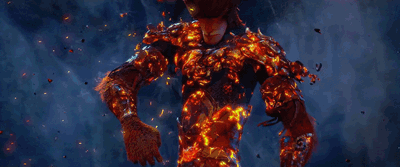
(hold your horses, Sun Wukong… we’ll get to you in a minute!)
That’s not to say there was no interesting animation from this period! As we enter the 2000s, Thru The Moebius Strip pointed to one way things were going to go, introducing CG animation with a story inspired by Jean ‘the one artist everyone loves’ Giraud. By today’s standards, the CG in that film looks pretty shonky, and it wasn’t a great success… it would take another decade for the tech to get properly impressive.
Much more successful was the rise of independent web animators, using ‘content portal’ like Flash Empire (launched 1999, now defunct)), Flash Lands (launched 2006, now defunct) and even western sites like Newgrounds. On web animation night, we encountered one notable animator from this period, Zhu Zhiqiang, who created the ‘stick figure fight’ genre with his series Xiao Xiao. Some of those animators went pro in the anime industry - I’ve gone on enough about Weiliin Zhang on here, whose incredible effects animation made him one of the most popular sakuga animators over in Japan.
Sadly the demise of Flash is probably going to really hurt this kind of small-scale, individual animation in China much as it has in the West. I have no idea what the current scene is like.
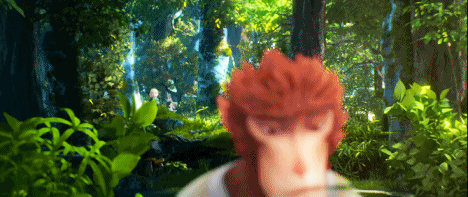
In any case… things are changing again. The 2010s saw the rise of a bunch of CG and traditionally animated films with the same mythological themes as the ‘golden age’ animations, but now with a lot more anime influence. As Accented discusses in that video (in extremely glowing terms!), this started with Monkey King: Hero is Back (2015), where Chinese animators got to really flex in the intro to show what they could do with the traditional themes.
Since Monkey King, a bunch of films have been made in this vein. We’re also seeing some more anime-styled titles, such as Big Fish & Begonia (2016), which makes a pretty convincing gesture towards (sigh @ my brain) Ghibli style with Chinese characteristics. It’s full of all sorts of weird creatures and great character designs that would be properly at home with Miyazaki at his most inventive.
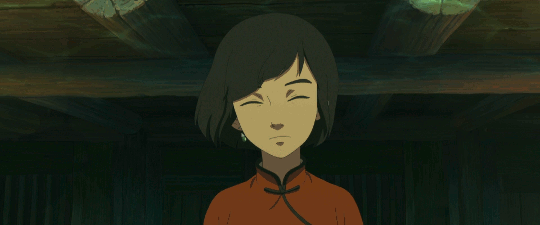
A few other notable films from this current era…
- The Guardian/Dahufa (2017) - gorgeous watercolour background, slightly more comedic angle
- The Wind Guardians (2018) - CG mythology with absolutely lush environments
- Crystal Sky of Yesterday (2018) - more of a contemporary school story angle - an idealisation of modern Chinese school life
- Ne Zha (2019) - a new CG adaptation of the story of Nezha, and the second-highest grossing film in China like… ever
As far as TV animation goes, there’s also a lot of anime-style too - though it often strikes me as slightly less stylised in its approach to faces, more akin to the kinds of designs of Studio Mir (cf South Korean animation night). I should mention mention one that got giggles over here: the young-Karl Marx donghua The Leader (2019), which was inevitably, despite the lush illustrations, a somewhat clunky attempt to get young people to watch a hagiographic lecture on Marxism.
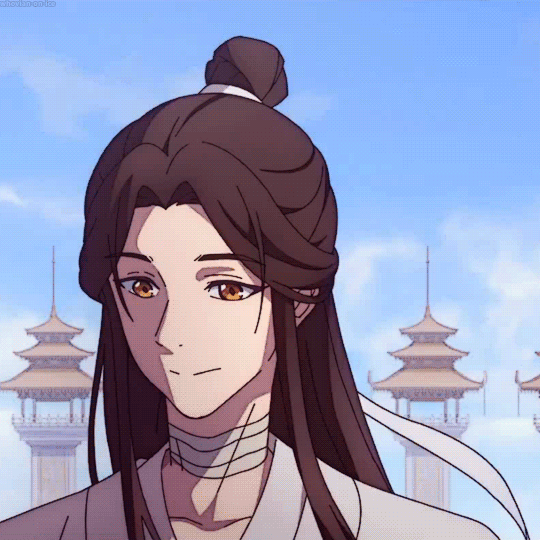
(this is not Karl Marx, I couldn’t find a gif of Donghua!Marx)
Recent TV shows have often adapted serial web novels. Some examples: Master of Demonic Cultivation (魔道祖师 Mó Dào Zǔ Shī), and Heaven Official’s Blessing (天官赐福 Tiān Guān Cì Fú), both adaptations of xianxia web novels by Mo Xiang Tong Xiu. These novels are wildly popular, putting a much more modern spin on that ‘ascent to heaven’ mythology, with a whole host of associated tropes and self-referential variants - not at all unlike isekai novels! The premise of these ‘cultivation’ novels is that it’s possible to consciously develop the qualities needed to ascend to heaven, such as lots of chi, but once you get there, there’s a whole bureaucratic hierarchy to contend with. From there, they take it in a variety of directions.
These novels are also notable for having explicitly M/M romance, which during the 20th century has been pretty fraught in China, and is still contentious with the government. I can’t be sure if Tian Guan Ci Fu is the first to break that taboo, or how far it will go, but the fact that a danmei author is writing plots for some of the most successful shows in the last few years seems like it’s probably good news! (That said, it’s following pretty closely the footsteps of live action there. Danmei is apparently a genre heavily influenced by BL, and likewise is mostly aimed at straight women, so ymmv here)
The Mo Dao Zu Shi adaptation is a project of Tencent Pictures, a subsdiary of the big tech company Tencent. Their work has appeared on a lot of recent Western superhero films and even game films like Warcraft, but finding out what they produce at home is surprisingly more difficult, beyond a brief mention of propaganda films. So I can’t tell you much more about them.
Haoliners, the studio behind TGCF, is on the other hand absolutely one to keep an eye on. The other major project of theirs I’ve seen is the traditionally animated sections of Riot’s League of Legend trailer Kin of the Stained Blade, where they did some pretty incredible swordplay animation and atmospheric visuals. Looking forward to investigating more of their projects.
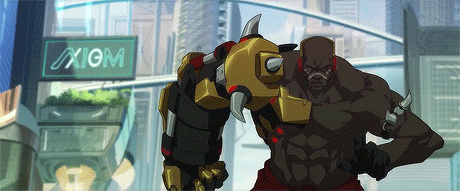
This new animation boom has seen the rise of a lot of really great studios. One I think I mentioned before is Wolf Smoke, who have been steadily building an audience on Youtube and at film festivals. Their most recent, gorgeous short film is Valley of White Birds, while Overwatch fans might know of them for their short but damn impressive Doomfist trailer.
Meanwhile, Nice Boat Animation, the main studio behind Dahufa, a few months ago dropped a startlingly impressive trailer for their upcoming film Shuo Feng - Po Zhen Zi. There’s a lot of heavy effects on the photography, but the underlying character animation is so precise - look at the hand motion in the first few seconds, it’s tight as hell. Apparently the story is set in the Tang dynasty, who fought with the Abbasid Caliphate and Tibetan Empire back in the 700s. If you’re wondering, the studio’s probably named after a certain meme about censorship of a particularly violent episode of the TV show School Days… make of that what you will!
So: the current wave of Chinese animation seems to be characterised by absolutely bananas levels of technical skill at both character animation and effects. What that’s going to lead to, I can’t say! When you read about companies like Tencent you sink into a swamp of capitalist language of like, leveraging IPs and building Disney-like franchises, but I hope there’s room for artists to exercise their own direction and make some really memorable films that say something, rather than just be a ‘wow’ button for Riot and Blizzard to tap for trailers or a profitable investment for a tech giant like Tencent.
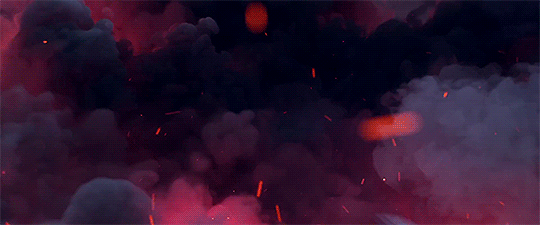
I’m sure there’s major stuff I’ve missed in this brief history! Unfortunately, compared to anime, there is vastly less effort - official or ‘unofficial’ - to translate, sub and release a lot of Chinese animation in English. Certain anime ripping groups like erai-raws seem to be paying a little more attention to Chinese work, but it’s still kind of a case of people individually going ‘wow holy shit Chinese animation is way cooler than I realised’ rather than a serious international fandom translating shows and documenting the industry, like there is for anime. Maybe the rise of xianxia’s going to change that?
In the interests of time… for our first Chinese animation night (hopefully of many!), I’m going to narrow the focus to traditional animation based on mythology. Which doesn’t narrow it down that much, admittedly. If we have a good time with this we can definitely check out more of it later!
Here’s the plan:
- short: The Cowherd’s Flute (1963) - 20:30
- first feature: Uproar in Heaven (1964) - 1:48:00
- short: The Clever Duckling (1960) - 7:30
- intermission!
- short: excerpts from Nezha Conquers the Dragon King (1979) - ~10:00-15:00
- short: Valley of White Birds (2018) - 15:00
- second feature: Big Fish and Begonia (2016) - 1:45:00
- short: Shuo Feng - Po Zhen Zi trailer (2020) - 2:00
- music videos for real this time!
[total video runtime: about 4.5 hours, plus break time, so we should hit music videos around midnight]
Animation Night 27 will start at 7pm UK time on Thursday 12 Nov 2020 at twitch.tv/canmom, about 19 hours from this post going live!
I had a lot of fun filling in my knowledge of history here, and I’m v much looking forward to getting you all excited about the Chinese animation boom! see you tomorrow :D
Comments